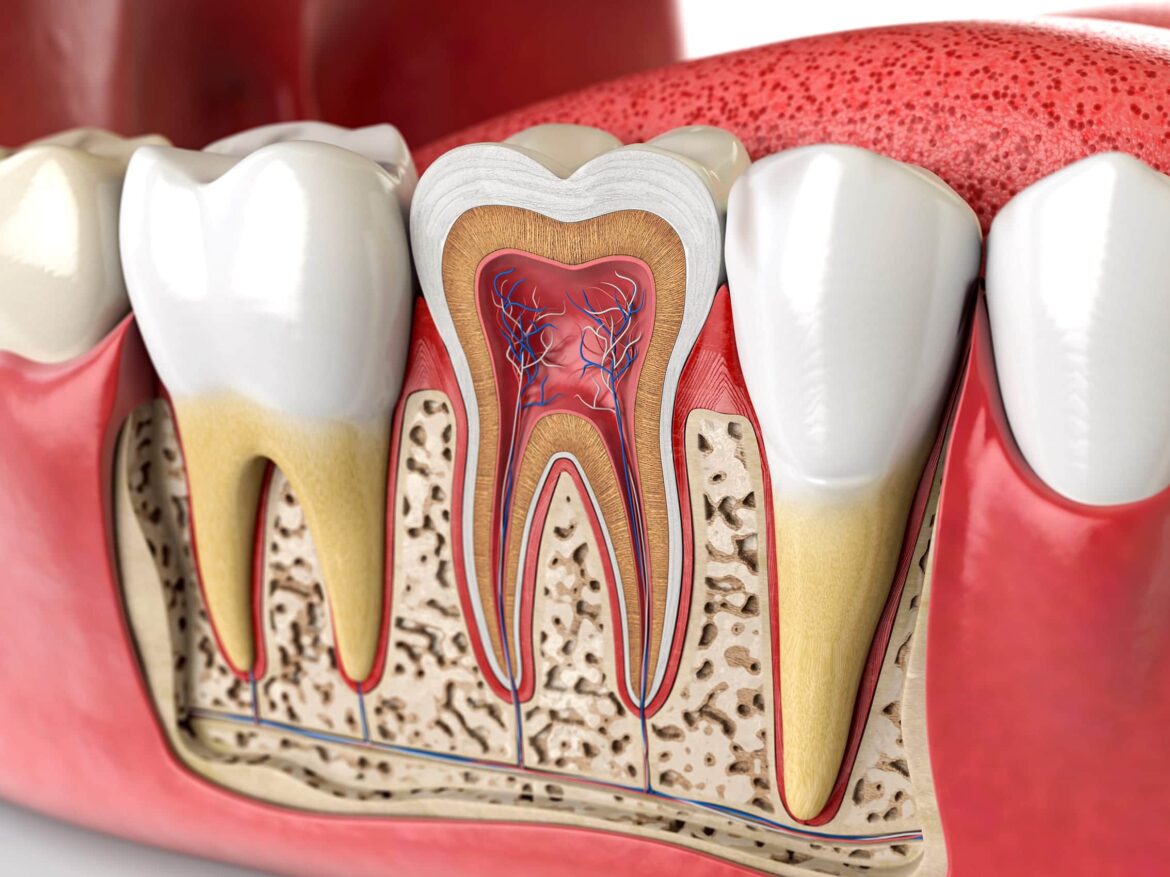1.8K
To learn what a tooth is made of, you first need to take a closer look at the structure of our chewing tool. The outer layer of our teeth is the hardest substance in the whole body. However, it is not a bone because it cannot divide.
What a tooth is made of: The crown of the tooth
The visible part of the teeth is called the dental crown. Underneath the enamel is the dentin, and underneath that is the pulp. This is where nerves and blood vessels are located and thus the connection to the rest of the body.
- Despite its hardness, tooth enamel is not invulnerable. Acids and brushing teeth too hard, for example, can damage it. Demineralisation is the result. In the worst case, caries develops.
- The mineral is extremely resistant and in its high concentration in the tooth enamel it protects the teeth, which become increasingly sensitive towards the inside, in the best possible way. The remaining percentages are made up of the trace elements magnesium and fluorine.
- The dentine consists of a significantly smaller – but still high – proportion of hydroxyapatite. Here, the mineral is still represented by about 70 percent. The much softer and slightly yellowish dentin is also composed of about 10 per cent water and 20 per cent organic substances. Due to this fact, dentin can be formed anew throughout life.
- Hidden inside the dentin in the tooth cavity is the pulp. This is where the exchange of nutrients with the body takes place. The dental pulp is made up of nerve fibres, blood and lymph vessels.
What lies beneath the gums
From the outside, all we see at first are the gums that surround our teeth. But the periodontium also consists of different layers, each of which has its own function.
-
- In technical jargon, the gums are called gingvia. It has the important task of keeping harmful bacteria or acids away from the sensitive tooth root. This is because the tooth pulp is also located in the root of the tooth. It can indicate the invasion of bacteria with inflammations, for example.
-
- Each tooth has one or more roots with which it is anchored in the alveolar bone. This is an extension of the jaw bone.
-
- The elastic yet stable connection between the jawbone and the root of the tooth is created by the periodontium. It has the additional task of cushioning the pressure that occurs during chewing.
-
- The so-called dental cement provides additional protection for the root of the tooth. It connects the perodontium to the jawbone with its special fibres.

